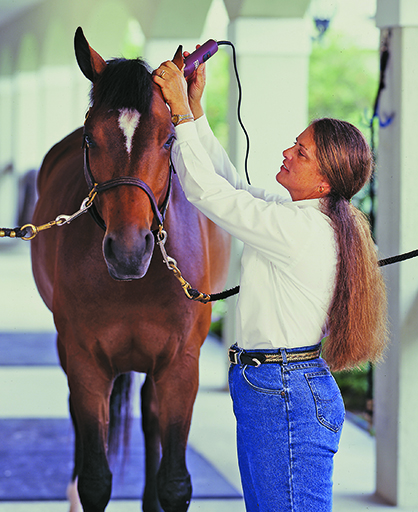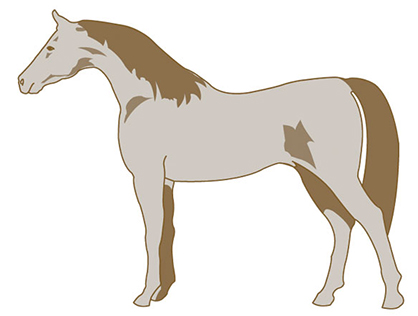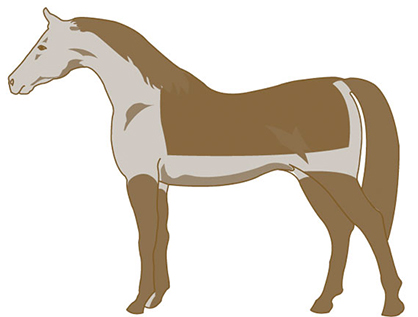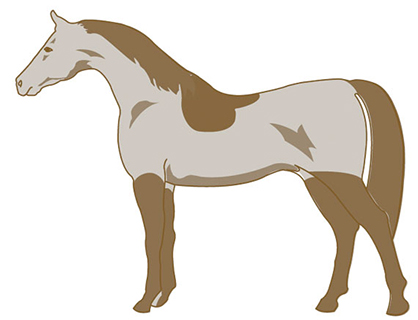Tips For Fall Clips From a Horse Grooming Expert
Raise Your Horse Grooming IQ for When the Temperatures Fall
Like it or not, cool weather is upon us. If you’re anything like Andis Equine Educator Dana Boyd-Miller, you’re making plans to ensure your horse is properly groomed as temperatures dip and seasons change.
Colder temperatures pose a unique challenge with two main factors–the amount of time the horse will spend in the elements, and how much exercise your horse will receive in the cooler months.
With that information in mind, Boyd-Miller shares her top four clips and some insider grooming knowledge you should consider for your horse as temperatures fall!
Full Body Clip
Recommended for: show horses, race horses and horses living in warmer climates.
A full body clip includes cutting the entire coat from the inside of the ear to the tip of the back foot, excluding the forelock, mane and tail. The full body clip can take a considerable amount of time, but Boyd-Miller actually prefers using a cordless clipper because of the flexibility it provides when moving around the horse.
During cooler months, it’s critical to remember to blanket horses with a full body clip when they’re not working.
Trace Clip
Recommended for: horses doing light work and may live outside.
Did you know that horses are susceptible to ailments from wet weather like skin fungus? Boyd-Miller recommends a trace clip for the horse that lives outside because any areas where the horse sweats heavily will be cut short.
Start by using your clipper to remove fur from the front of the neck, chest and underside of the stomach.
Blanket Clip
Recommended for: horses doing heavier work living in a cold climate.
The heavier working horse will enjoy this cut for its quick cool-off time! The neck, chest and shoulder areas should be clipped using a size 10 blade, while leaving the fur on the legs long.
“Just because you’re clipping less of the horse does not mean you can skimp on cleaning as you go,” Boyd-Miller.
Be sure to clean your blade as you work, stroking with a small brush. You should also make sure to oil the blade every 10-15 minutes as you work to keep the parts running smoothly. I would suggest cleaning with Andis Cool Care Plus®. The five-in-one coolant, disinfectant, lubricant, cleaner, rust preventative and disinfectant. It’s great for clipper maintenance as you go.
Hunter Clip
Recommended for: field hunters and young horses in training, primarily in racing and occasionally for endurance horses.
For this clip, follow the blanket pattern: start clipping just behind the shoulder and continues at the same level across the hindquarter and up the butt cheek. To finish, clip the areas on the side and under the jaw short and leave fur on the front of the face longer.
“On the face, I like to use the Andis ProClip Excel™ 5-Speed Detachable Blade Clipper,” Boyd-Miller. “It runs cool at low speeds, so it’s perfect for those sensitive areas.”
Choosing the right cooler weather clip is key to your horse’s well being. Make sure to think about how much exercise your horse will get in the cooler months, as well as how much time your horse will be spending outside. What every you choose, just remember: functionality is key.
About Dana Boyd-Miller
Dana Boyd-Miller, from West Palm Beach, Florida, has been a professional equine grooming expert for over 35 years. With a long list of equine specialties, she is highly sought after for her talent as a master body clipper and clinician. Dana works on some of the country’s best show ponies, hunters and jumpers and clips between six to seven hundred horses throughout the year, many of which are specialty breeds imported from other countries.















